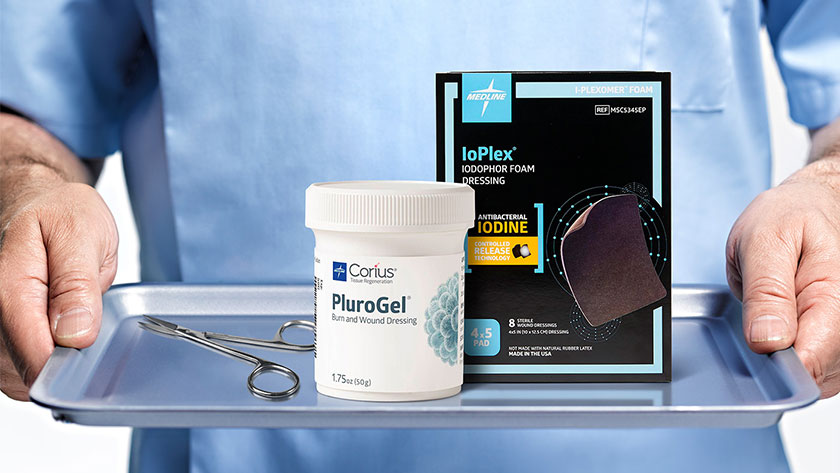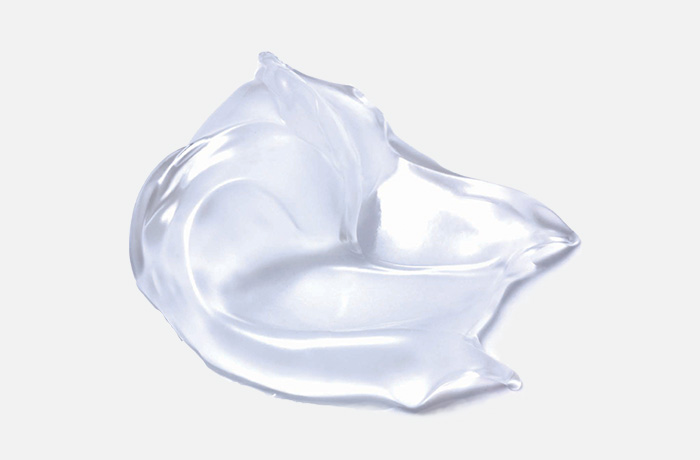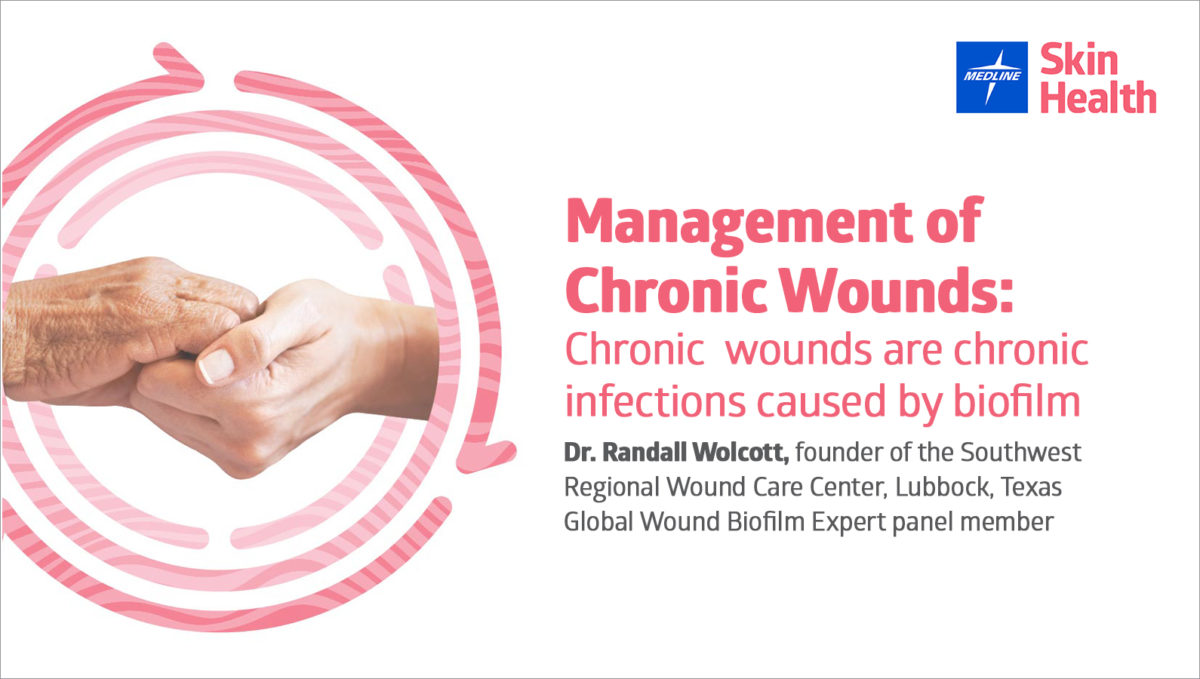Biofilm-based wound care: Tools and strategies to help manage chronic wounds

While acute wounds follow a normal healing process, chronic wounds get stalled along the way. This slow-down in healing is often due to the presence of biofilm, and research has shown that up to 90 percent of non-healing wounds contain biofilm.1
Biofilms are bacterial structures physically attached to a surface and difficult to remove with standard antibiotics and biocides.2 When it comes to biofilm in chronic wounds, you won’t be able to completely remove it. Instead, your goal is to inhibit its growth to allow the wound to start healing.
To help manage biofilm, follow these proven tools and strategies.
Debridement
Debridement removes dead tissue and wound debris that can be a barrier to healing. It also forces bacteria within the biofilm to become more active, making them more vulnerable to antibacterial agents.3
Biofilm disruption
Certain wound care products can inhibit biofilm from reforming on the wound surface after debridement. This inhibition forces the bacteria to work harder and longer, which opens the door for advanced wound healing approaches.
Product to consider:
PluroGel Burn and Wound Dressing creates a moist wound healing environment. This concentrated surfactant gel has been shown to prevent and disrupt biofilm in vitro.4 It softens, loosens and traps debris to maintain an optimal moist wound healing environment.


Antibacterial agent
There are many different types of antibacterial agents to choose from. Each has its benefits and pitfalls. Iodine is an antibacterial agent that has numerous in-vitro studies that demonstrate its power at managing biofilm.
Product to consider:
IoPlex Iodopher Foam Dressing reduces bacterial burden within the wound dressing. A hydrophilic absorbent foam dressing, IoPlex is complexed with slow release iodine that helps manage biofilm in-vitro.5

Repetition required
Just like the daily buildup of biofilm on your teeth—known as plaque in the dental world—biofilm can rebuild quickly. You brush your teeth every day, and similarly, you’ll likely need to repeat your biofilm management strategies multiple times to successfully move a wound from chronic to healing.
24 hours
When biofilm can be detected in vivo after debridement5
Key takeaway
Biofilm can present an obstacle to wound healing because it grows quickly and is resistant to most antibiotics and biocides.6 Be sure to assess each patient individually, being ready with aggressive measures and advanced wound care if you suspect a wound has stalled. To help a chronic wound start healing, be persistent and prepared with multiple strategies and tools.
Learn more about biofilm:
Management of chronic wounds: Chronic wounds are chronic infections caused by biofilm
Biofilm: Why it matters to wound care and treatment innovations to fight it
IoPlex Iodopher Foam Dressing
PluroGel Burn and Wound Dressing
Discover a new strategy for battling the toughest biofilms

Special thanks to John P. Kennedy, RPh, PhD, a research professor with South University School of Pharmacy and a consultant to Medline Industries, LP
References:
- https://www.ncbi.nlm.nih.gov/pmc/articles/PMC3839004/
- https://www.ncbi.nlm.nih.gov/pmc/articles/PMC3839004/
- Yang Q, Larose C, Porta AD, Della Porta AC, Schultz GS, Gibson DJ. A surfactant-based wound dressing can reduce bacterial biofilms in a porcine skin explant model. International Wound Journal. 2017;14(2):408-413
- Data on file
- https://onlinelibrary.wiley.com/doi/full/10.1111/wrr.12590

